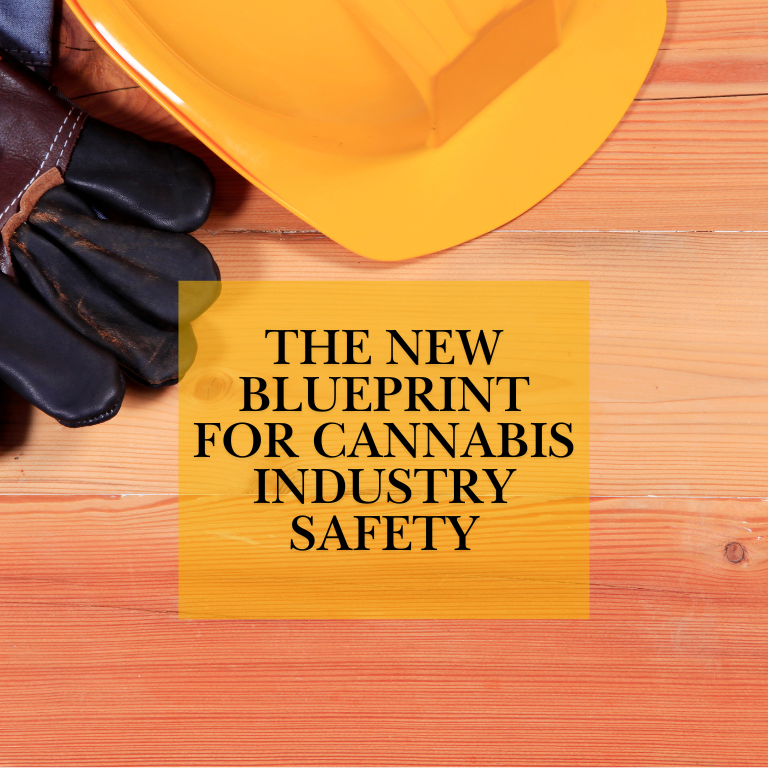Revamping Safety: The New Blueprint for Cannabis Operations – A Comprehensive Approach to Ensuring Worker and Consumer Protection in the Growing Industry
As the cannabis industry continues to expand, both in the U.S. and internationally, safety has become an increasingly important issue for operators, employees, and consumers alike. With new businesses emerging, regulations evolving, and consumer expectations rising, the need for comprehensive safety protocols has never been more urgent. The cannabis industry is unique in its blend of agriculture, manufacturing, and retail, which makes the need for an integrated safety approach even more critical. In this article, we’ll explore the latest developments in cannabis safety, outline best practices for operators, and discuss why revamping safety measures is essential for the industry’s growth and long-term sustainability.
The Importance of Safety in the Cannabis Industry: Protecting Workers and Consumers
The cannabis industry is multi-faceted, encompassing everything from cultivation and processing to distribution and retail. Each aspect of the business comes with its own set of safety challenges, from handling hazardous chemicals in cultivation to ensuring consumer safety in retail environments. In many ways, cannabis operations are akin to other high-risk industries, such as agriculture or food production, where safety concerns must be addressed across a range of processes.
However, cannabis operations also face unique challenges due to the complex and ever-changing legal landscape, along with the stigma that still surrounds cannabis use in some areas. Ensuring the safety of employees and customers in the cannabis space is not just about regulatory compliance; it’s about building consumer trust, fostering a positive workplace environment, and driving the success of the business in a competitive market.
Understanding the Key Areas of Cannabis Safety: Worker Health, Product Quality, and Consumer Protection
A strong safety program for cannabis operations must address several key areas to ensure that both workers and consumers are protected. Let’s break down some of the core components of cannabis safety that businesses must focus on as they implement new strategies and protocols.
Worker Safety: Establishing Safe Work Environments for Cannabis Employees
Cannabis production and retail are labor-intensive operations that often require employees to handle heavy equipment, chemicals, or even live plants in ways that could lead to accidents or injuries. From cultivation and processing facilities to retail dispensaries, worker safety should be the highest priority for employers in the cannabis industry.
This includes providing employees with the necessary training on safe operation of machinery, proper handling of pesticides or fertilizers, and using protective equipment such as gloves, respirators, and goggles when necessary. Worker training programs should also include emergency preparedness, first aid, and procedures for addressing workplace hazards such as fire, chemical exposure, or physical injury.
Furthermore, as cannabis production often involves the use of heavy machinery, forklifts, and complex automation, it’s essential that operators follow strict protocols for machine maintenance and safety checks. Regular safety audits, inspections, and updates to safety protocols can help prevent accidents and maintain a safe working environment.
Product Quality and Safety: Ensuring Cannabis is Safe for Consumers
One of the most crucial safety aspects in cannabis operations is ensuring that products meet safety and quality standards. For cultivation operations, this includes using safe and effective pest management strategies, maintaining clean growing environments, and ensuring that crops are free from contaminants such as mold or pesticides. Processing operations must also adhere to food safety and quality standards, including testing for harmful substances such as residual solvents, heavy metals, and pathogens that could negatively affect consumers.
Third-party testing plays a significant role in ensuring product quality and consumer safety. In many regions, cannabis products are required to undergo lab testing for potency, contaminants, and safety standards. However, businesses should not rely solely on regulatory testing but should also have internal quality assurance measures in place to ensure consistency, purity, and safety across all products.
Packaging and labeling are also integral to product safety. Clear and accurate labeling can prevent overconsumption, allergic reactions, or other health-related issues by informing consumers about dosage, ingredients, and potential side effects. Additionally, packaging must comply with local regulations related to child-proofing, tamper-proof seals, and safety warnings.
Consumer Protection: Enhancing Customer Safety and Experience in Retail Environments
Retailers are the final link in the cannabis supply chain, and they play a crucial role in consumer safety. Cannabis dispensaries must implement safety protocols not only to protect consumers physically but also to ensure that they understand the products they’re purchasing and consuming. This involves providing clear product information and educational materials on dosing, usage, and potential side effects.
Dispensary staff should undergo rigorous training to offer consumers accurate product information, explain safety protocols, and guide customers through their purchasing experience. Many customers, particularly those who are new to cannabis, rely on the expertise of dispensary staff to make informed decisions, so it’s critical that employees are well-versed in both the product offerings and the legal framework governing cannabis use.
In addition, creating a safe environment for consumers in retail spaces involves protecting personal data, maintaining compliance with local regulations, and preventing theft or fraud. For example, cash handling procedures in dispensaries should be strict, as many cannabis operations still deal in cash due to banking restrictions in certain regions.
Addressing the Evolving Legal Landscape: Compliance and Regulatory Challenges in Cannabis Safety
One of the biggest challenges for cannabis operators is navigating the complex regulatory landscape, which can vary dramatically from one region to another. In the U.S., cannabis laws are governed by a combination of state and federal regulations, with each state setting its own rules regarding safety standards, product testing, packaging, and employee training. Cannabis operators must stay updated on these regulations to remain compliant and avoid penalties, and they need to adapt quickly to changes as laws evolve.
At the federal level, cannabis remains illegal, which creates challenges for businesses when it comes to securing financing, insurance, and access to banking services. This lack of federal legalization also means that cannabis businesses must handle compliance on their own, without the same support or resources available to businesses in other industries.
For cannabis operators, understanding local regulations related to worker safety, product safety, and consumer protection is paramount. This may include zoning laws, health and safety codes, and guidelines for labeling and advertising. Regular communication with legal counsel and industry associations can help businesses stay informed and ensure that their safety programs meet the latest standards.
Best Practices for Implementing a New Safety Blueprint in Cannabis Operations
Now that we have outlined some of the key areas of safety in cannabis operations, let’s look at some best practices that cannabis businesses can implement to ensure a robust safety culture.
Develop Comprehensive Safety Training Programs: Implement ongoing training for employees in all aspects of cannabis safety, from handling hazardous materials to proper product handling techniques. Regular refresher courses and updates to training materials will help employees stay current on best practices and regulatory changes.
Implement Strict Standard Operating Procedures (SOPs): Clear and detailed SOPs should be created for every aspect of cannabis operations, from cultivation to retail. These SOPs should include safety protocols for machine operation, chemical handling, pest management, and product testing.
Conduct Regular Safety Audits and Inspections: Establish a system of regular audits and inspections to ensure that safety protocols are being followed and that any potential hazards are identified and mitigated. Having an independent third-party safety consultant assess your operations can help uncover areas for improvement.
Invest in Employee Wellbeing Programs: The cannabis industry is physically demanding, especially in cultivation and production. Providing employees with health benefits, mental health support, and wellness programs can help reduce workplace accidents and improve overall job satisfaction.
Prioritize Transparent Communication and Consumer Education: For consumer safety, it’s important that cannabis businesses prioritize clear communication regarding product information, dosages, and potential risks. Offering educational materials, training staff to engage with customers effectively, and ensuring that product labeling is accurate and informative can significantly improve consumer safety.
A Safer Future for the Cannabis Industry
As the cannabis industry continues to grow, ensuring the safety of employees and consumers is vital for its success. The blueprint for cannabis safety must be comprehensive, addressing everything from workplace conditions and product quality to consumer protection and regulatory compliance. By adopting best practices and staying proactive about safety, cannabis businesses can build consumer trust, foster positive work environments, and ensure long-term sustainability in a rapidly evolving industry. The new blueprint for cannabis operations is not just about meeting regulatory standards—it’s about creating an environment where safety, trust, and innovation go hand in hand.















